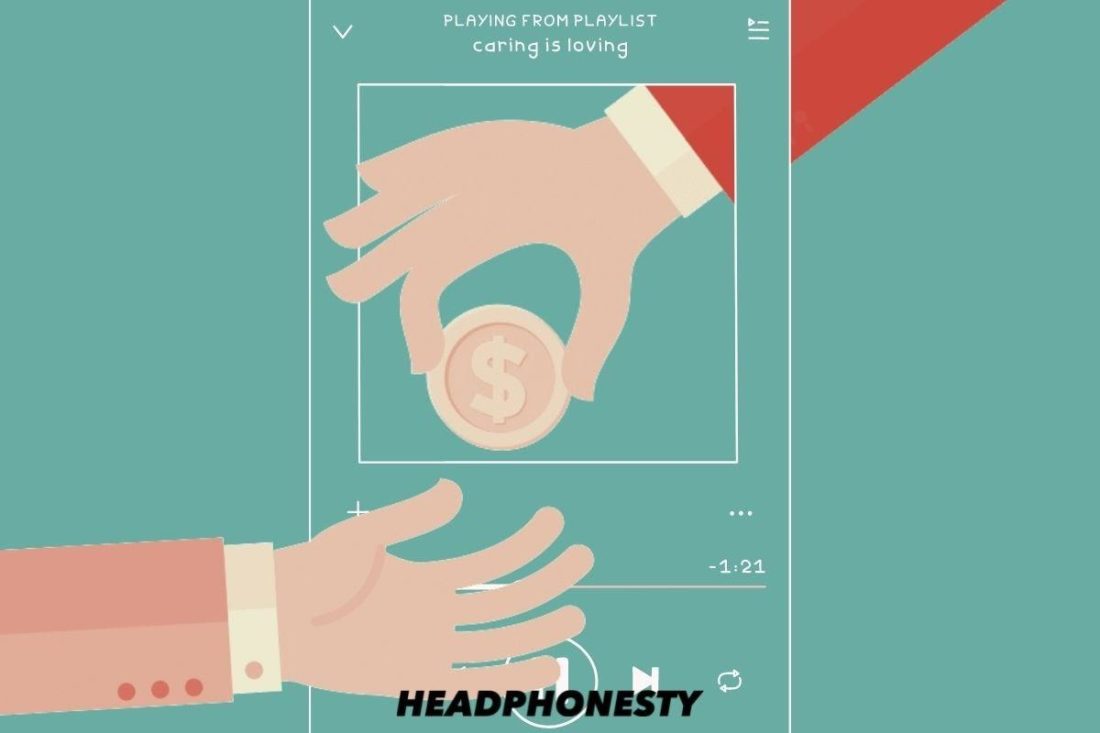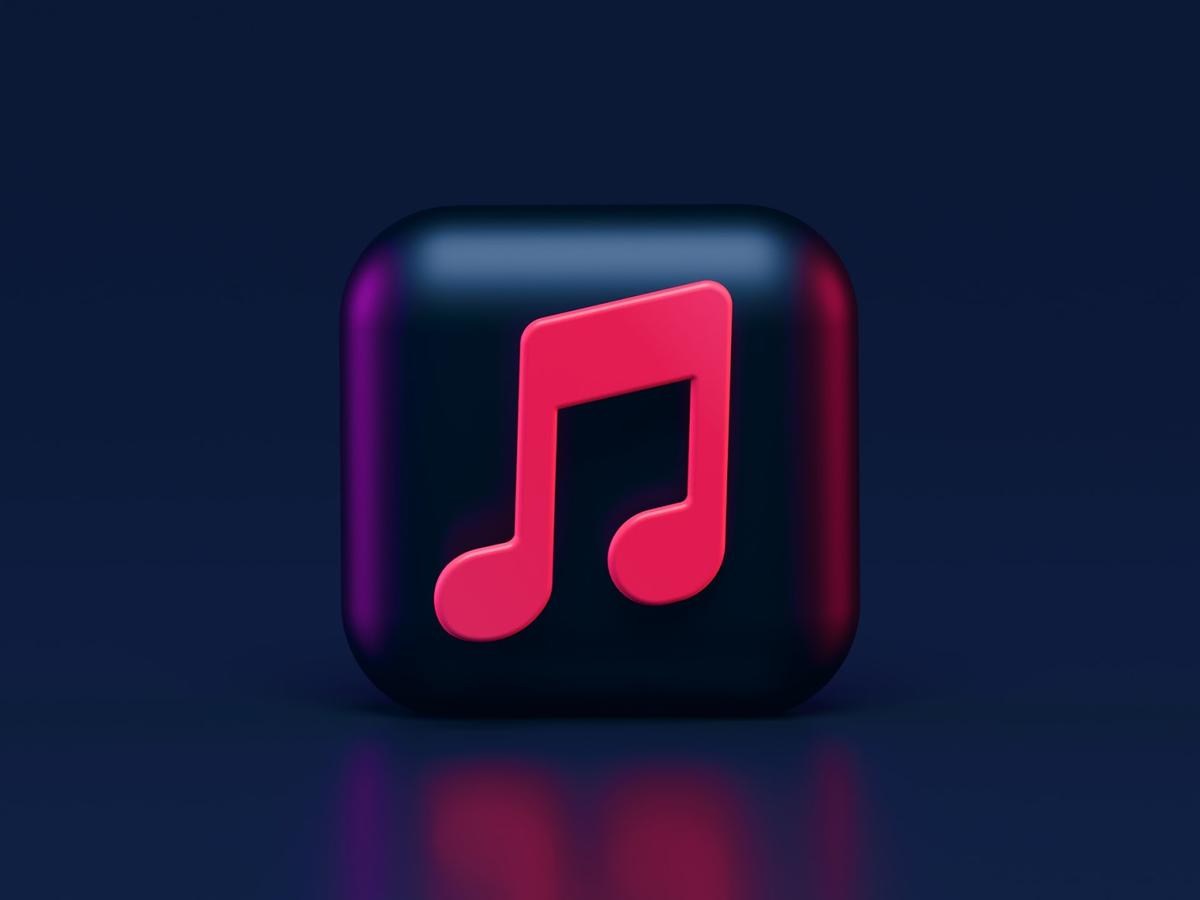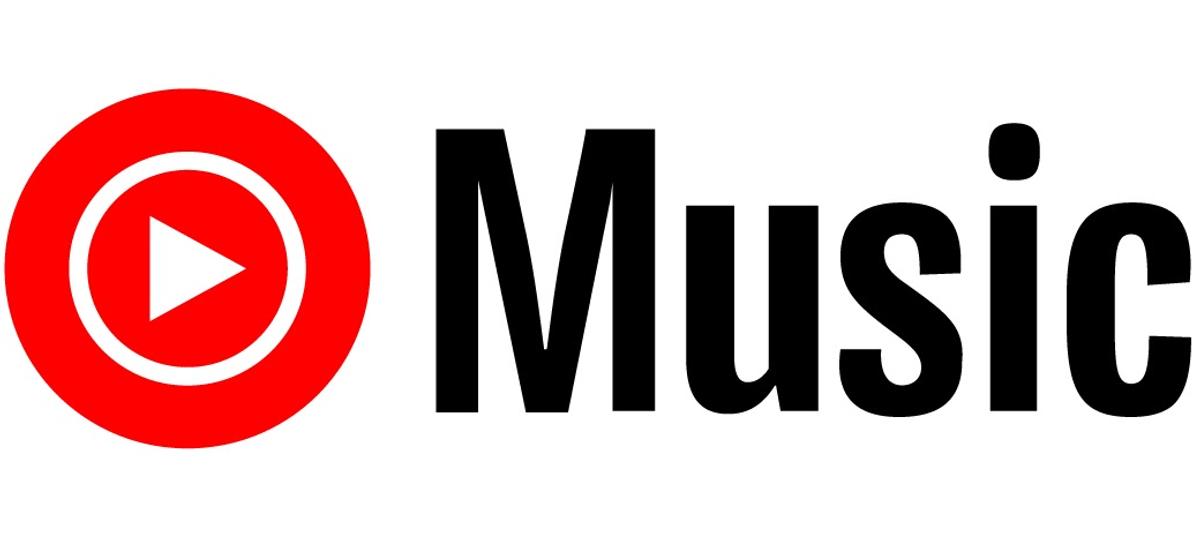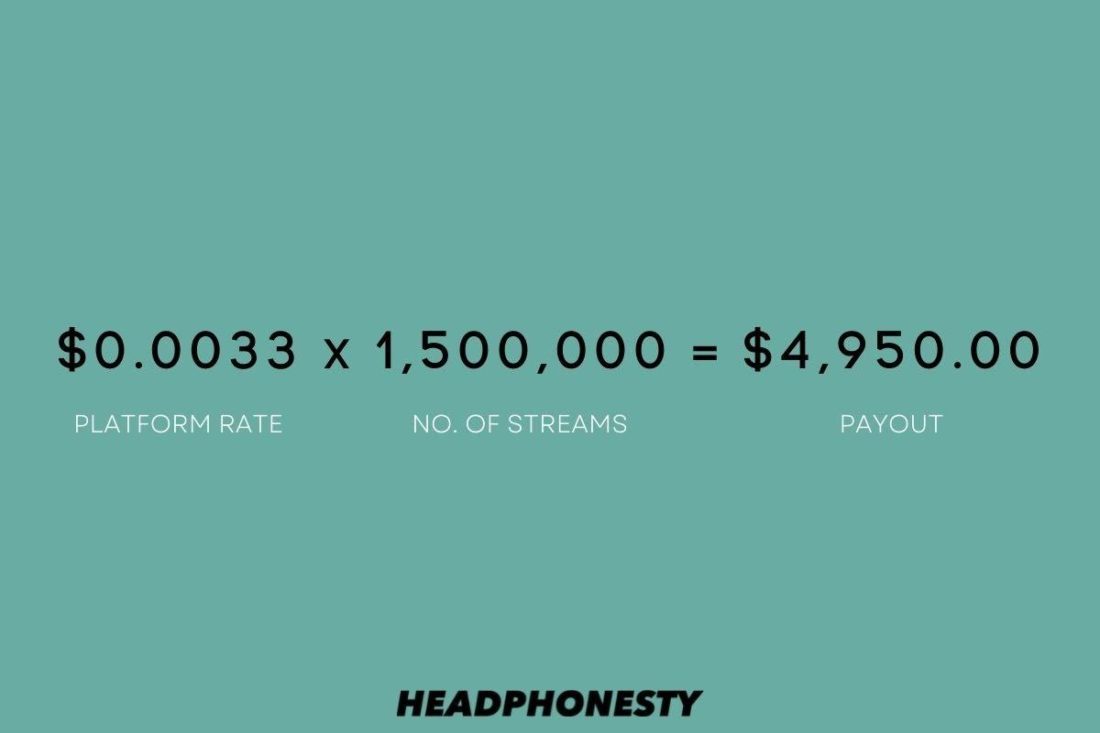As fans, we only want the best for our favorite artists. And since not everyone can buy physical albums or merchandise, a lot of us can only support them by streaming their music on different platforms. But, at some point we ask ourselves: is that enough? Unfortunately, a lot of music streaming platforms don’t clearly state how much they pay artists, while some platforms only pay the artist a fraction of a cent every time you play a song. There’s no standard rate, though. So, if your goal was to support your favorite artist, you may want to pick the streaming platform that pays the most. To help you with that, we’re diving deep to find out how much Spotify and other platforms pay per stream. Let’s get right into it!
3 Types of Artist Royalties Streaming Platforms Use
The paid subscription pricing model is taking over the planet now. In 2020, the total sales of physical album copies dropped by a whopping 30%, while paid subscriptions grew 12% from the previous year. Despite the shift in how people listen to music, artists still earn payouts (albeit a lot smaller) from royalties – just like they would from physical copy sales. These streaming platforms pay the artists to put their songs on their library. As a return, the artists will get a certain amount of payouts every time users play their songs. There are three different types of payouts that music streaming platforms use to pay artists:
Mechanical Royalties
Mechanical royalties are generated every time a musical composition is physically or digitally reproduced. In the case of interactive streaming platforms, where users get to decide what songs to play, digital reproduction of a song happens when a user presses ‘play’. While in non-interactive streaming platforms (e.g., AM/FM Radio), the royalty falls under the ‘public performance royalties.’
Public Performance Royalties
Public performance royalties are the fees that artists and publishers receive every time their music is broadcasted or played publicly (e.g., over AM/FM radio, jukebox, restaurants, supermarket, etc.). This is handled by the Performance Rights Organizations (PROs). PROs collect license fees from parties who use music and pay songwriters and publishers in the form of public performance royalties. These royalties are generally discussed by the streaming platform with the PRO. It’s typically around 6-7% of the platform’s total revenue, taken out from the All-In Royalty Pool.
Payout to Recording Owners
When you ask about how much artists make on streaming platforms, 99 percent of the time, you’ll be looking at the amount of payout to recording owners. The payout to recording owners is the whole amount of money containing all types of royalty tied to a music which will be distributed to all parties involved (e.g. producers, songwriters, musicians, non-featured singers, etc.). Here’s how the digital streaming amount is divvied up according to SoundExchange:
45% to the featured artists 5% to the non-featured artists 50% to the rights owners of the music
Depending on how the artist approaches the deal with streaming platforms, they can be making anywhere from 45% to 100% of the payout. Let’s take a look at an example to help you understand it. Justin Bieber’s song, Love Yourself, was written by Ed Sheeran, Benjamin Levin, and Bieber. It was released by Def Jam record label. The song has been streamed 17.4 million times. With the $0.091 per stream mechanical royalty, it should generate about $1,583,400. The streaming platforms will pay the whole sum to Def Jam as the label. Def Jam will then distribute the whole sum to everyone involved in making the song according to their roles. The explanation above is an overly simplified explanation of the royalty distribution – but that’s the gist of it.
How Much Do Music Streaming Platforms Pay per Stream?
While Spotify, Apple Music, and YouTube Music are probably the ones dominating the music streaming market, there are other platforms that you can use to stream your favorite tunes. There are dozens of music streaming platforms on the planet, ranging from giants with a global market like Spotify to niche services like Tidal. Each platform has its unique pricing model, selling point, and user base, hence the difference in artists’ earning amount per stream. This section will discuss the amount of payout that streaming platforms give to the artists they feature. The table below is an overview of how much they pay the artist for each stream, and how many streams it takes to earn $1,000.
Apple Music
Apple Music is the second most popular music streaming platform in the U.S., with over 72 million active users in 2020, just behind Spotify. The company has publicly stated that its average payout per stream is $0.01. But that one cent doesn’t immediately go to the artists’ pockets. Like other major streaming platforms, Apple Music runs a pro-rated model that distributes 52% of the platform’s ad revenue to music labels indiscriminately.
Deezer
Deezer isn’t the most popular music streaming platform by any means, but it currently has more than 14 million monthly users, half of whom are paid subscribers. The company stated that they want to pay artists fairly through their user-centric payment system dubbed as “Pay who you play.” Because of this, when a paid subscriber listens to only one artist per month, their entire subscription fee will go to that artist (with a minor platform fee reduction). However, Deezer’s per-stream payout varies a lot depending on who you ask. For example, T-Pain once posted that Deezer pays around $0.0064 per stream, while other artists can get as low as $0.0011. Again, this depends on different factors, such as location & subscription.
Spotify
As the leading music streaming platform with over 200 million monthly active users, Spotify has a rather negative reputation for handing out artist payouts. While the company is yet to provide details about how much they pay per stream, a 2020 Business Insider report found that artists earn as little as $0.0033 per stream. Moreover, the artists don’t even get to pocket all of it. Only about 70 percent of the total revenue goes directly to the artist. The platform itself absorbs the other 30 percent. The somewhat low payout for artists has sparked the “Justice at Spotify” movement started by the Union of Musicians and Allied Workers. The movement demands that Spotify do several things, including:
Pay musicians one cent per stream Adopt user-centric payment (like the one used by Deezer) Be more transparent with the revenue streams End legal battles intended to impoverish artists
Pandora
Pandora started as an internet radio – it’s what they’re most famous for. But as a music streaming platform, Pandora pays artists as little as $0.0013 per play, as reported by David Crosby in 2017, and verified by T-Pain in 2021. The smaller amount of payout is likely related to their dwindling number of users. In Q2 of 2021, Pandora had 55.1 million active users, which is on a down-trend from their 81.5 million users in 2016. While it is one of the oldest players in the music streaming scene, it’s only available in the U.S. – which is why it has a very limited user base. However, Pandora pays artists differently depending on whether the streams are interactive or non-interactive. Non-interactive refers to Pandora’s free tier, which technically functions like an ad-supported radio. Streams that come from these are paid with a fixed rate of 45% directly to the primary artist via SoundExchange, as these are considered ‘Performance Royalties‘. These are then split equally between the artist and songwriter depending on their agreement. On the other hand, interactive streams are those that are played with a paid Pandora subscription — i.e. ad-free and on-demand. Royalties for this go directly to the label and distributor. The actual amount the artists receive depends on their agreement. Unfortunately, some artists report getting less than half of the royalties per stream because of this.
YouTube Music
As the subsidiary of the world’s most popular streaming platform, YouTube Music pays artists as little as $0.008 per stream. While YouTube Music doesn’t really pay artists much, the platform’s growing popularity combined with the on-video ads (for music videos streamed through YouTube) likely make the overall income marginally higher. The payout from YouTube ads should be around $7-10 per 1,000 impressions. But not every view counts as an impression, only about 30-40% of views on YouTube videos contain ads. Realistically speaking, a music video needs around 4,000 views to earn that $7-10.
Tidal
Tidal isn’t as popular as others, but it’s the streaming platform that pays the most, giving artists around up to $0.013 per stream. That comes out to Tidal paying $13,000 per 1 million streams. However, Tidal aims to be more artist-friendly by adding a lot of variables in their streaming payout calculations, named as the Direct Artists Payout program and the Fan-Centered Royalties respectively. These programs give artists additional royalties based on the HiFi Plus tier subscribers. There’s no exact number for this, though, as this depends on the HiFi Plus tier subscription revenues.
How Are the Streaming Payouts Calculated?
The basic payout calculation is quite simple: streaming platforms typically have a set payout rate per stream, multiplied by the number of streams. For example, Spotify pays about $0.0033 per stream. While Spotify hasn’t officially disclosed it, the per-stream payout should be directly affected by its payout rate. Suppose you have an album that has generated 1,500,000 streams on the platform, the payout would be something like: In this example, $0.0033 is likely generated from Spotify’s payout rate, which not all streaming platforms openly disclose. The payout rate and setup from one streaming platform to others may be drastically different, hence the inconsistency of the payout throughout different platforms. For example, Apple has officially disclosed that they have a 52% payout rate. This means if Apple made $1 million in revenue, they would distribute $520k to the artists according to their stream count and other factors like streaming location and the type of users who stream the music. But the actual amount that you receive may be less than the estimate above. There are many other variables like the streaming location and subscription type (which we’ll cover below) that may affect the actual payouts that the artists receive.
Factors affecting Streaming Payouts
While there are many variables that affect the streaming payout, the local streaming market and the type of users are the most prominent ones. Here’s a little bit more information about how the type of users and local markets affect the amount of pay that artists receive.
Free vs. premium streams
The type of user who streams a certain track will determine how much the artist receives from that transaction. Since streaming platforms use different subscription models, you can’t really generalize the payout calculation. In the case of streaming platforms with ads-enabled free streaming with premium plans (like Spotify and Deezer), the average payout is determined by the sum of revenue from subscriptions and ads. For reference, in a 2017 study, Spotify reportedly had an Average Revenue Per User (ARPU) for premium subscribers at $4.81, while the ARPU for the ad-supported stream was only $0.51. While streams from either paid or free users are the same, the revenue from ad-supported users is nowhere near what premium users generate.
Local streaming markets
Not all countries have the same market situation, and that’s why streams from different locations will generate different amounts of payout. For example, users need to pay $9.99 for a month of premium Spotify in the United States. But in smaller markets like Indonesia, a month of premium Spotify membership is only around $3.99. Basically, Spotify had to cut down the subscription price to compete with local streaming services like Joox, which charges only $1.50 per month. Not only Spotify, but other streaming platforms like Apple Music and YouTube Music have had to adjust their prices in different markets they want to penetrate. As mentioned above, the platform’s total revenue directly impacts the payout that artists receive per stream. The lower the subscription price, the smaller per-stream payout artists get. Pay-for-Play features If artists and their labels are willing to pay, they may be able to increase the number of streams they earn from and boost their popularity with Spotify’s new feature – called the Discovery Mode. A marketing tool introduced in 2021, it helps put artists’ music on top of the list when listeners look for new music. This allows artists to pick which songs they want people to listen to the most. And then pay for Spotify’s system to add those picks to its algorithm (that selects music for personalized playlists). The benefit of using this pay-for-play feature is that it will get an artist’s song out to more users who might not have heard of the artist before. This might lead to more fans, more streams, and more revenue for the artist. It’s also worth noting that this feature can be costly. There’s no upfront fee to use Discovery Mode. Instead, Spotify will take a larger percentage of your per-stream rate as a commission. This commission seems extreme, compared to the average per-stream rates we discussed earlier. Artists can lose money trying to promote their songs, and there’s no guarantee that they’ll get any more streams with the feature. That’s why, while this feature looks good on the outside, some artists have expressed concerns about the actual risks and benefits of the feature — not just for the artist but for the users as well.
Can Artists Live Off Music Platform Streams?
The answer to this question is tricky, mainly because the exact rate that the streaming platforms pay per stream depends on several factors. User account type, label agreements, and the artist’s country all play a part in determining the stream payout. However, we can put how much money the streaming platforms pay artists into perspective in a couple of different ways. Let’s assume a minimum wage of $15 per hour–which comes out to an annual income of $31,200. And that doesn’t even cover marketing costs and other fees that would come out of the artist’s income. To put this into perspective another way, an artist would need to get 333,000 streams to earn $1,000. Again, this uses a Spotify money-per-stream rate of $0.003. It also doesn’t include fees from the artist’s revenue, so this number will likely need to be higher.
For Artists: How to Increase Earnings From Streaming Platforms
It’s evident (from the discussion above) that even the best-paying streaming platforms aren’t paying enough to fill artists’ pockets. But all is not lost. If you’re an artist looking to get more income from streaming platforms, there are several things that you can try.
Consistently release new music
The first and most obvious step to try is growing your fanbase by consistently releasing new music. Promoting your new releases through highly-available social media platforms is also a great way to generate initial exposure for your music.
Release music internationally
The second thing you can try is by releasing music in internationally-spoken languages, like English. For example, listeners from the U.S. generate $0.0035 per stream on Spotify, whereas Italian listeners only pay about $0.0019. By releasing music in popular languages (or making beats without lyrics), you’ll have a better chance of getting streams from high-paying regions.
Get your music to curated playlists
The third method is climbing your way into popular curated playlists. Streaming platforms often have millions of user-generated playlists – some of which are more popular than others. In Spotify, Rap Caviar is one of the most popular hip-hop playlists on the platform. Any new track that stumbles its way into that playlist will receive a massive stream boost. When you can get your music to popular playlists in its genre, you’re pretty much set to have a steady flow of per-stream payout.
Utilize SEO tactics to get more streams
Lower down in ranking yet equally crucial as an income-generating “hack,” it’s imperative you know how to use SEO to reach more of your target audience. But what is SEO? Well, SEO stands for Search Engine Optimization, and it’s a handy tool that any artist can use to get their music out to more listeners. Simply put, SEO tactics help artists game Spotify’s algorithm with the help of keywords. What are keywords? They’re what people use when searching for specific music. For example, if a listener wants to find new music in the rap genre, the keyword they’ll enter into Spotify’s search bar is “rap music.” One of the most straightforward SEO tactics is to pick an artist name similar to your genre. To use our previous example: if you’re a rap artist, you’ll want listeners to find you when they search for rap music. To make yourself more visible in searches, you could use an artist name that includes “rap.” Spotify will automatically put your content higher in the algorithm when people search for your genre.
Conclusion
Now that you’ve learned how much each streaming platform pays their artists, you should be able to pick one that shows the most appreciation to your favorite musician. While the per-stream payout mentioned in this article is generally accurate, details on how each platform calculates the payout are often undisclosed. Do you have a favorite music streaming platform that we didn’t cover here? Let us know in the comments.








